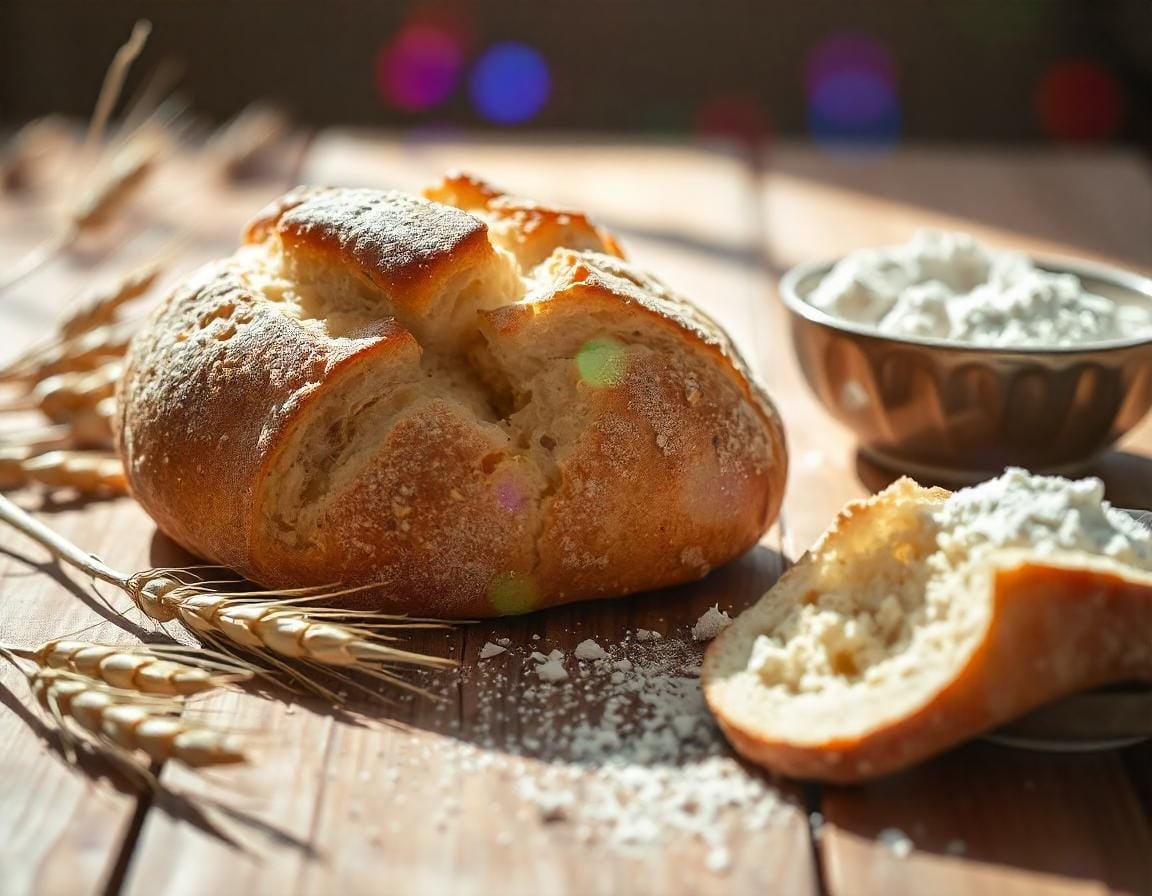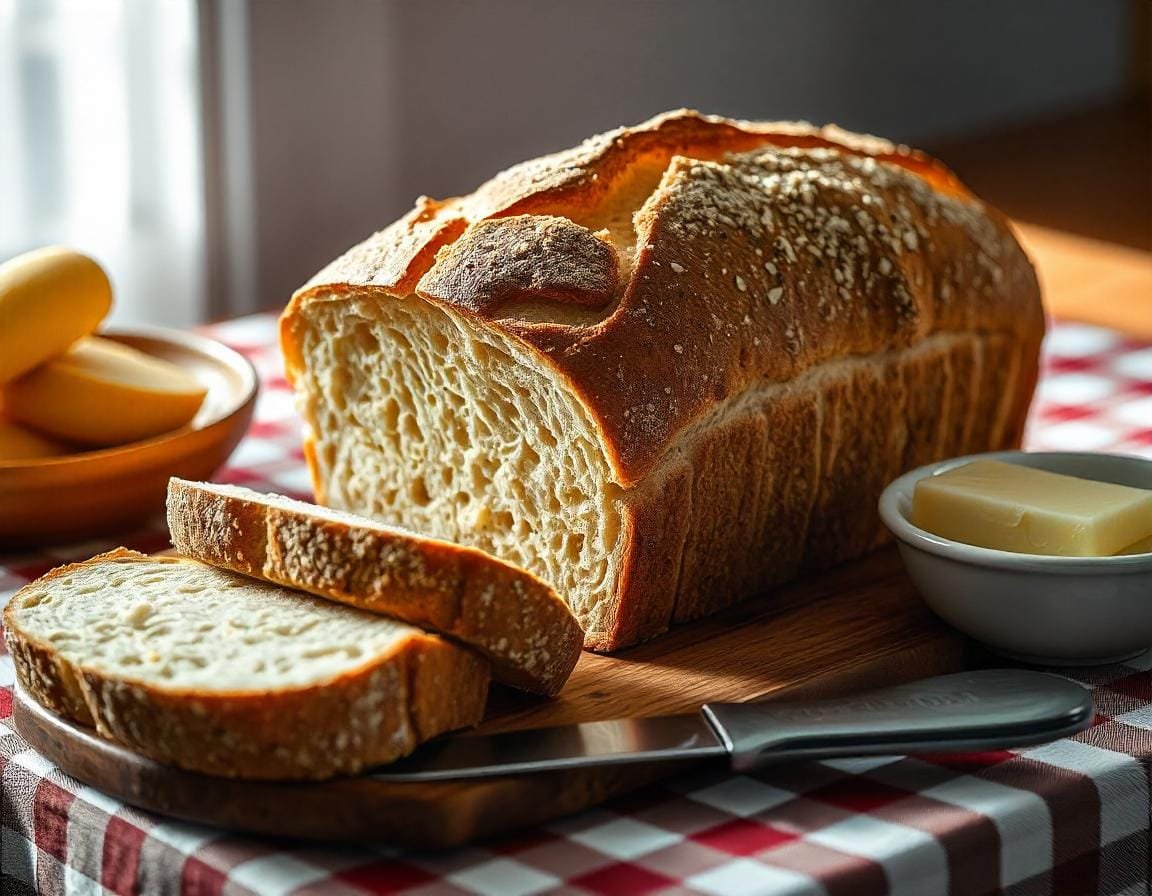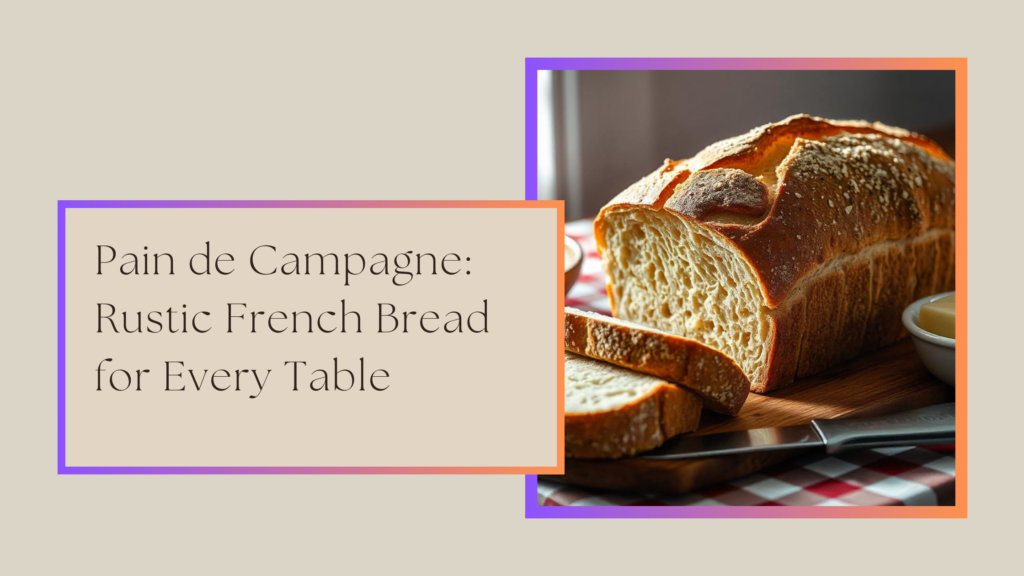Table of Contents
Introduction
Even our pastries and bread, ranging from croissants to baguettes, are famous all over the globe. Sifting through the ANZ, one may specify acute selections such as Pain de Campagne, the French country bread, Due to its antique origins and its meaningful taste and texture, the scent of heat and the taste of the crusty toasty bread reaches the core of each French country individual.

Originally produced in French rural households, Pain de Campagne remains one of the most popular creations for professional bakers and passionate home bakers at the same time, given the fact that the method of its preparation remains a simple but curiously fascinating secret. As the title suggests, in this article we will focus on Pain de Campagne and try to reveal the history of creation, learn the process of making it, and analyze the reasons that make it an eternal value.
Some facts about Pain de Campagne
Today, Pain de Campagne has its origins in the XVIII century; yet, these tender round loaves borrowed more than their shape from the Romans. Roman and other European societies getting to the region influenced the development of the techniques and grains for bread making that defines Pain de Campagne. However, the formula developed with the progression of time, modifier flours, procedures, and components. However, the texture of the bread was country style, rich taste, and crispy crust remained with the new product.
During the 19th century, the French government developed a concern for the quality of French bread. Louis-Napoléon Bonaparte, who was destined to become Napoleon III, emerged as the leader and used the law to compel the creation of French bread. This was required to ensure that the Pain de Campagne and other French breads were made using specific proportions of the flours used, with and required to be allowed to cool for a certain number of hours before being sold to consumers. This law also controlled the sale of bread to ensure they were cheap and easily accessible to the common people.
It was during this period that Pain de Campagne started to grow to be famous. This bread was made entirely by hand and of only the best quality ingredients by artists who made the bread a symbol of the countryside French culture and mastery. Even today, Pain de Campagne is a traditional type of bakery product that emphasizes the best features of French baking.
Robert Nangle’s Process of Pain de Campagne
Baking the perfect Pain de Campagne is a delicate process that needs several delicate procedures of measuring, time, and love for baking. See below for more information on the conventional style of Pain de Campagne baking.
1. Ingredients:
The very basic ingredient in your Pain de Campagne is the flour. Mainly used were hard wheat (T65) for 80% and soft wheat (T110) for 20%; their composition determines the tastes, textures, and crust. Water, salt, and yeast in a moderate amount sweeten the already well-endowed dish.
2. Mixing the Dough:
Into a big bowl, pour the flour and add the water into it. Then add a little bit of salt and knead the yeast into the mixture without stopping to knead the dough. This process should be carried out until the dough is smooth and elastic in nature. The duration that it takes to knead depends on the baker and the texture of the dough they want to produce.
3. Bulk Fermentation:
After that, the dough should be left in a warm place free from drafts and allowed to rise for several hours. This process is the one that gives the final texture and excellent taste of the dough. The dough needs to be tested frequently at this stage, in regard to both temperature and humidity levels.
4. Shaping and Proofing:
After bulk fermentation, the dough is then reshaped into round or oval-shaped loaves through a gentle process. These loaves are then placed in proofing baskets in order that they rise further. This should better be done slowly in order to achieve the right shape and crust of the last bread.
5. Baking:
Last but not least; the most exciting part of making the Pain de Campagne is here, that is, baking. Make sure the oven is hot and put the loaves directly on a baking stone or put the loaves in the Dutch oven. Bake for twenty-five to thirty minutes, or until the crust appears golden brown and the bread has a crisp outside layer and a soft inside feel. The baking time depends on the size of the loaves and the oven and in this procedure, I baked the loaf for 25 minutes.
Check Out: Mastering the Art of Italian Ciabatta Bread.
Pain de Campagne: A Taste of French Countryside

Essentially, Pain de Campagne is the bread that I think brings the beautiful rustic charm of countryside France to mind. Its smell is close to the earth, has an incredibly dense, complex taste, and according to its structure – it is most suitable for garnishes.
Some of the most popular ways to enjoy Pain de Campagne include:
- It’s more than fine served simply on its own, although, of course, a slab of high-quality French butter wouldn’t exactly go amiss here.
- It can be served alongside such cheeses as brie or camembert.
- But when it is melted and used in French foods such as croque monsieur or French onion soup.
- Developing a traditional board involved meats, cheeses, and other additions.
Conclusion
The real beauty of Pain de Campagne is that it is simple. It encapsulates what rural France is all about, as well as the passion of bakers in France. This bread is no simple creation in the pantheon of French bakery goods – Pain de Campagne is a loaf that fits perfectly into the tradition of a time-honored favorite that never loses its ability to enchant the senses of the consumer.
For More Info: Click Here!
FAQs
Q1. How should Pain de Campagne be stored?
Pain de Campagne, like most bread, should be kept in a cool, dry environment, although as with most bread, it is best consumed on the day of purchase. It can be allowed to sit in the kitchen for up to a couple of days, or kept in the refrigerator for even more days. To get the best out of it, the bread should be covered in a clean, dry cloth or aluminum foil to keep it soft.
Q2. Is Pain de Campagne something that can be homemade?
Absolutely! With a little bit of effort and some trial, you can easily make your own Pain de Campagne at home. As with all things that are baked, there are so many recipes online accompanied by directions and tricks on how to achieve the best bread. Just anyone can give it a try, it is again in the fermentation phase where your great Pain de Campagne is built.
Q3. What is a Pain de Campagne made with?
The ‘original’ Pain de Campagne recipe uses pre-fermented Central and West flour blends, but bakers have tried other substitutes through the years. Some popular variations include:
- Seigle de Campagne: Another addition of Pain de Campagne with rye flour which gives a luxurious flavor and a familiar intelligent French country bread.
- Pain de Campagne aux Céréales: A multigrain type that involves several grains and seeds leading to rich nutritional value and good taste of bread.
Whichever of the above is true or a combination of the two, the core of Pain de Campagne has not changed – it is a manifestation of the peasant French heart, and a tribute to the art of bread making.





